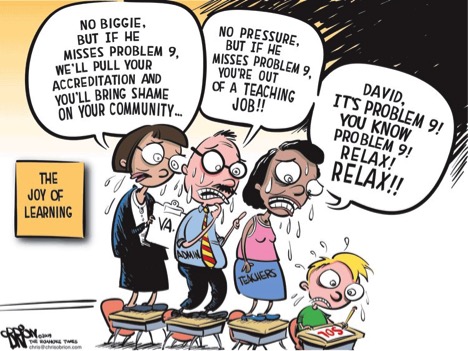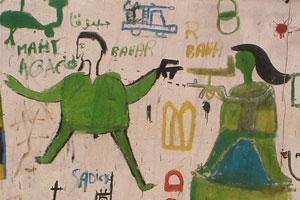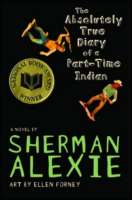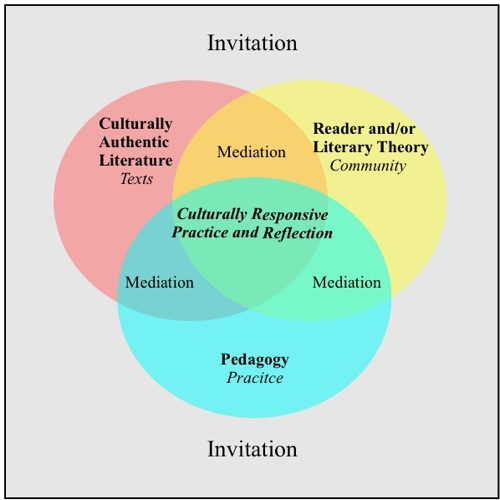By Marie LeJeune and Tracy L.Smiles
 First grade was visited by a woman from the principal’s office carrying a big pile of papers with little boxes all over them. She explained, “We have some tests for you.” Continue reading
First grade was visited by a woman from the principal’s office carrying a big pile of papers with little boxes all over them. She explained, “We have some tests for you.” Continue reading

By Marie LeJeune and Tracy L.Smiles
 First grade was visited by a woman from the principal’s office carrying a big pile of papers with little boxes all over them. She explained, “We have some tests for you.” Continue reading
First grade was visited by a woman from the principal’s office carrying a big pile of papers with little boxes all over them. She explained, “We have some tests for you.” Continue reading

by Melanie Landon-Hays, Tracy Smiles and Kenneth Carano
 For our final blog post, we reflect on the discipline that is perhaps most naturally suited to a study of global perspectives built on the stories of a discipline. Social Studies is a content area built on global stories of people, places, and events—their connections and their impacts both across time and space—that serve as a foundation for understanding one’s own place in the world in relation to the perspectives studied. Continue reading
For our final blog post, we reflect on the discipline that is perhaps most naturally suited to a study of global perspectives built on the stories of a discipline. Social Studies is a content area built on global stories of people, places, and events—their connections and their impacts both across time and space—that serve as a foundation for understanding one’s own place in the world in relation to the perspectives studied. Continue reading

By Melanie Landon-Hays and Tracy L. Smiles
 First, a confession. As “literacy people” we are not particularly fond of math. Cultural models are the story lines, or theories that belong to socioculturally defined groups of people (Holland & Quinn, 1987; Strauss & Quinn, 1998; Gee, 1998). We, who identify as “literacy people,” cannot deny the storylines we internalized about math: it is difficult to understand, comes easier for people who are predisposed with mathematical talent, is irrelevant, a set of skills we will rarely use in the real world. Continue reading
First, a confession. As “literacy people” we are not particularly fond of math. Cultural models are the story lines, or theories that belong to socioculturally defined groups of people (Holland & Quinn, 1987; Strauss & Quinn, 1998; Gee, 1998). We, who identify as “literacy people,” cannot deny the storylines we internalized about math: it is difficult to understand, comes easier for people who are predisposed with mathematical talent, is irrelevant, a set of skills we will rarely use in the real world. Continue reading

By Melanie Landon-Hays and Tracy L. Smiles
 In our first blog post we presented a framework for how we think about constructing classroom experiences that, through the stories of that discipline, apprentice students into disciplinary learning that fosters authentic, and relevant knowledge and presents opportunities for inquiry. This week we are examining science. Continue reading
In our first blog post we presented a framework for how we think about constructing classroom experiences that, through the stories of that discipline, apprentice students into disciplinary learning that fosters authentic, and relevant knowledge and presents opportunities for inquiry. This week we are examining science. Continue reading

By Melanie Landon-Hays and Tracy L. Smiles
 Today’s students live in a different world than we grew up in. Because technology has increased interconnectedness in almost every domain of learning including arts, politics, education, and cultures, today’s student is not bound by time and space when it comes to interacting with and learning about cultures and societies around the world. Coupled with migration and immigration, today’s student lives in more culturally and linguistically diverse US communities and schools Continue reading
Today’s students live in a different world than we grew up in. Because technology has increased interconnectedness in almost every domain of learning including arts, politics, education, and cultures, today’s student is not bound by time and space when it comes to interacting with and learning about cultures and societies around the world. Coupled with migration and immigration, today’s student lives in more culturally and linguistically diverse US communities and schools Continue reading

By Marie LeJeune and Tracy Smiles, Western Oregon University

During the month of April we’ve explored how some of our favorite authors can be mentors for reading, writing, and global citizenship. For our final post this month we are featuring author Pam Muňoz Ryan.
Continue reading

By Marie LeJeune and Tracy Smiles, Western Oregon University
 This week, we continue our exploration of authors as mentors—authors whose work and words contribute to our teaching of reading, writing, language, and culture. As we’ve mentioned in past weeks, we are interested in exploring a study of mentor authors whose work informs students as readers and writers but also as global citizens. We are now layering Marie’s framework for Mentor Author Studies with a framework for International Curriculum (Short, 2003).
This week, we continue our exploration of authors as mentors—authors whose work and words contribute to our teaching of reading, writing, language, and culture. As we’ve mentioned in past weeks, we are interested in exploring a study of mentor authors whose work informs students as readers and writers but also as global citizens. We are now layering Marie’s framework for Mentor Author Studies with a framework for International Curriculum (Short, 2003).
This week we examine a mentor author study of Sherman Alexie, whose work we have shared with middle and high school students and their teachers. Although Alexie’s The Absolutely True Diary of a Part-Time Indian is his only novel deemed “young adult,” much of Alexie’s work is suitable for secondary study, including many of his poems, essays, short stories and novels. Continue reading

By Marie LeJeune and Tracy Smiles, Western Oregon University
Mentor Author: Linda Sue Park
 This week, we begin our exploration of some of our favorite authors whom we have looked to as mentors in our classrooms—authors whose work and words contribute to our teaching of reading, writing, language, and culture. Again, we draw upon the framework below for our initial selection of possible mentor authors when we embark upon such study with students. Additionally, we are currently deeply immersed in work with international issues, themes, and literature with both students and teachers in K-12 classrooms. We are now layering <a href="http://wowlit.org/blog/2011/04/04/reading-as-a-collaborative-act-a-framework-for-exploring-author-studies/#more-15955Marie’s Framework for Mentor Author Studies with a Framework for International Curriculum (Short, 2003). In addition to seeking authors who are strong mentors for student writers—we also strive to consider and include issues of personal cultural identity, cross cultural studies, the integration of international experiences and texts, and inquiry into global issues (Short, 2003).
This week, we begin our exploration of some of our favorite authors whom we have looked to as mentors in our classrooms—authors whose work and words contribute to our teaching of reading, writing, language, and culture. Again, we draw upon the framework below for our initial selection of possible mentor authors when we embark upon such study with students. Additionally, we are currently deeply immersed in work with international issues, themes, and literature with both students and teachers in K-12 classrooms. We are now layering <a href="http://wowlit.org/blog/2011/04/04/reading-as-a-collaborative-act-a-framework-for-exploring-author-studies/#more-15955Marie’s Framework for Mentor Author Studies with a Framework for International Curriculum (Short, 2003). In addition to seeking authors who are strong mentors for student writers—we also strive to consider and include issues of personal cultural identity, cross cultural studies, the integration of international experiences and texts, and inquiry into global issues (Short, 2003).
Continue reading

By Marie LeJeune and Tracy Smiles, Western Oregon University
Author studies are common in many classrooms, but studying mentor authors means that we look at those who write for children and young adults in new ways—not just a study of their work and their life, but an in depth exploration of their craft and writing habits. In What You Know by Heart (2002), Katie Wood Ray reminds us that authors can be co-teachers of literacy experiences. In The Wonder of It All (2007), Nancy Johnson and Cyndi Giorgis explore how authors and illustrators create an ideal partnership for us when teaching—we teach in collaboration–their words layer together with our words to expand meaning in the socio-cultural contexts of our classrooms. This process of studying authors has even more power in the 21st century—in today’s world, authors and illustrators are potentially closer to children and young adults than they have ever been. Students can interact with authors in “real time” via blogs, social networking sites (Facebook, etc.), video and pod casts, websites, and other digital avenues for exploring authors’ craft and their lives as writers and creators.
Continue reading

By Marie LeJeune & Tracy Smiles, Western Oregon University

This month in WOW Currents we explored theoretical intersections and instructional challenges to using multicultural and international children’s literature with students of all ages. We began by creating a framework that articulated the theoretical frames that inform our practice and reflection, and provided examples from our teaching experiences in schools, in “out of school spaces,” and with preservice teachers. We heard from a variety of readers who have pushed us as teachers and researchers, and engaged in discussions with each other on the complexity of teaching literature, and our personal journeys as literacy educators. For this last blog entry we’d like to reflect back and respond to some of the issues raised for us around multicultural and international literature as we wrote for WOW Currents this month. Continue reading